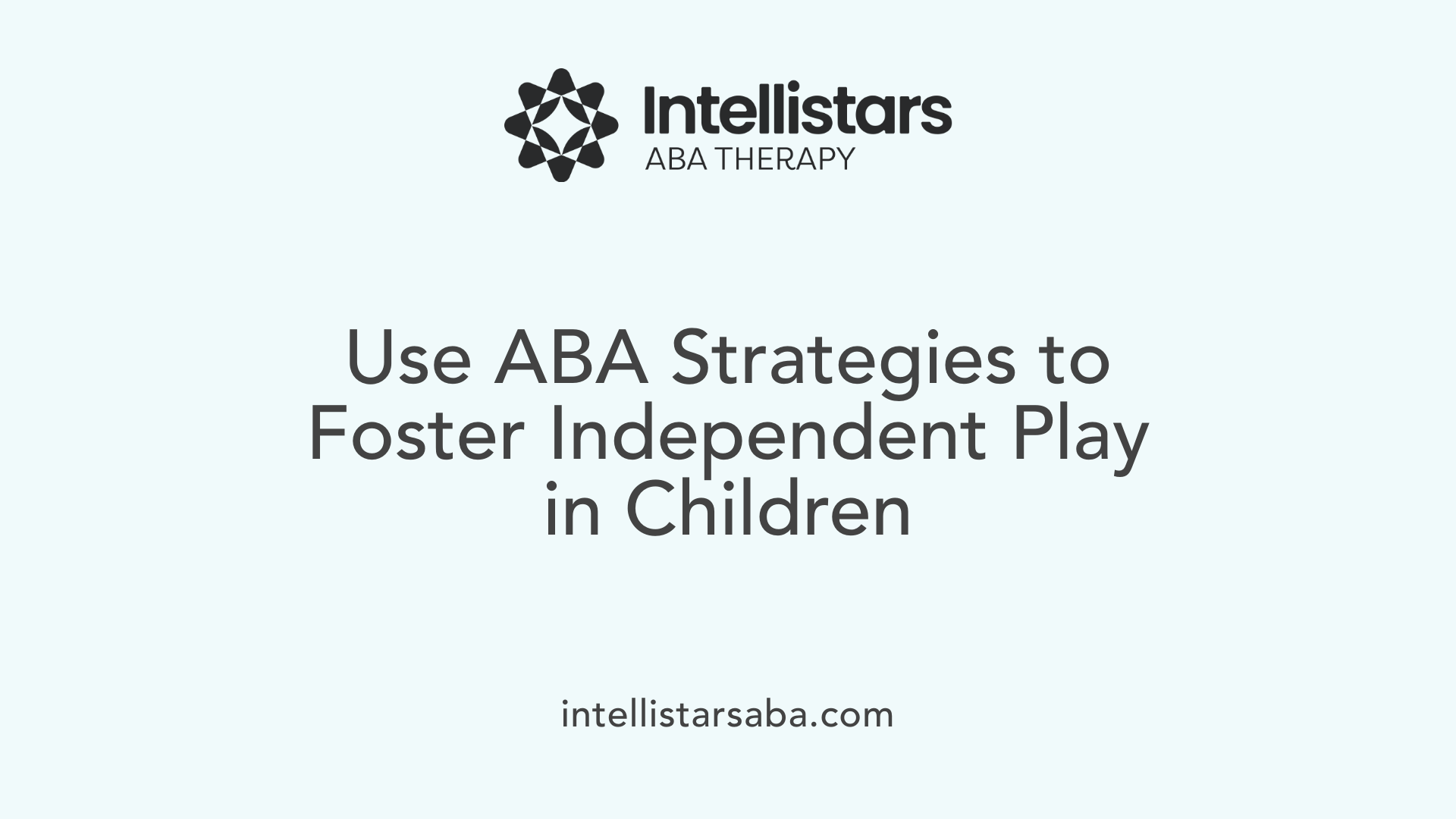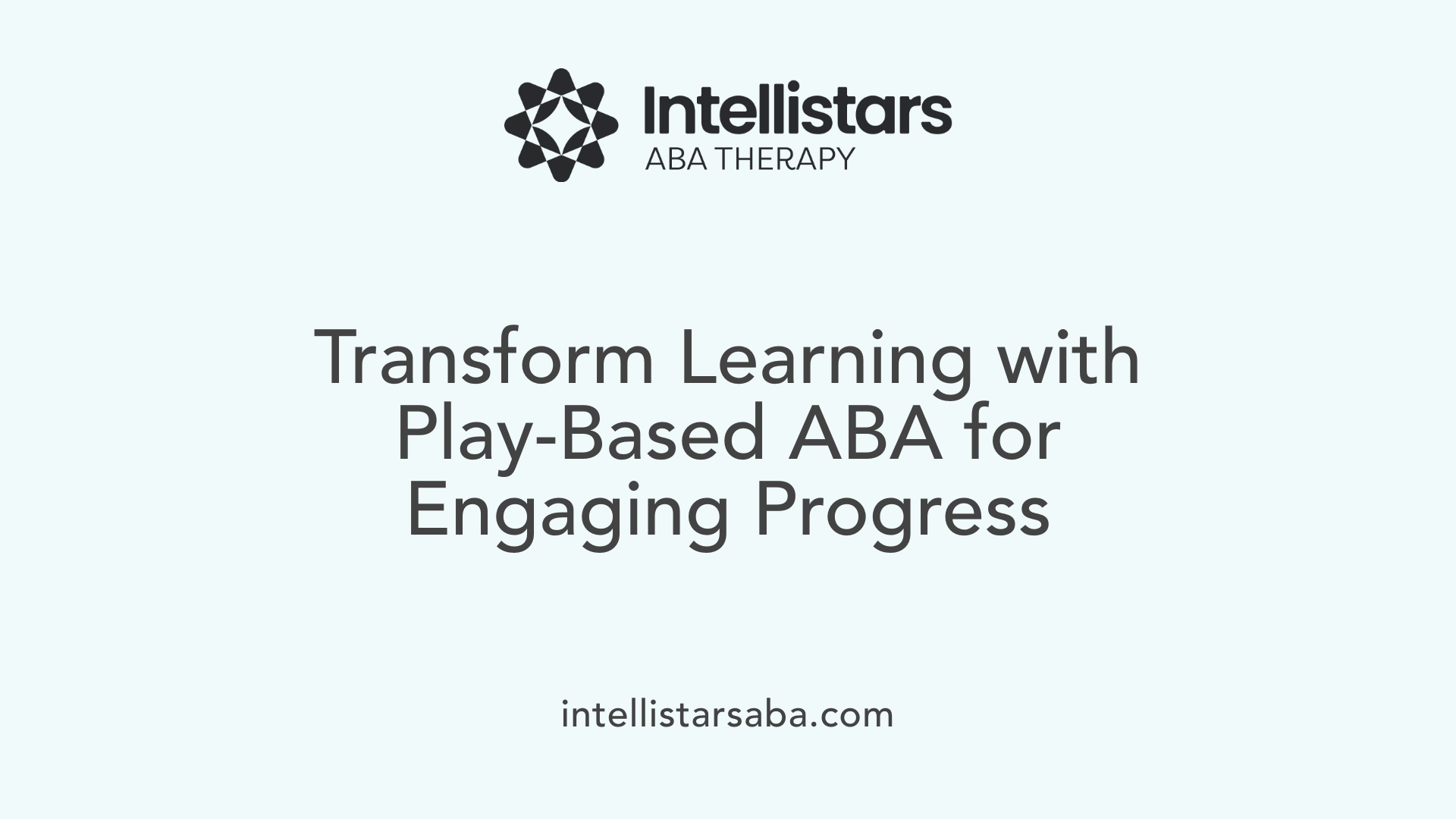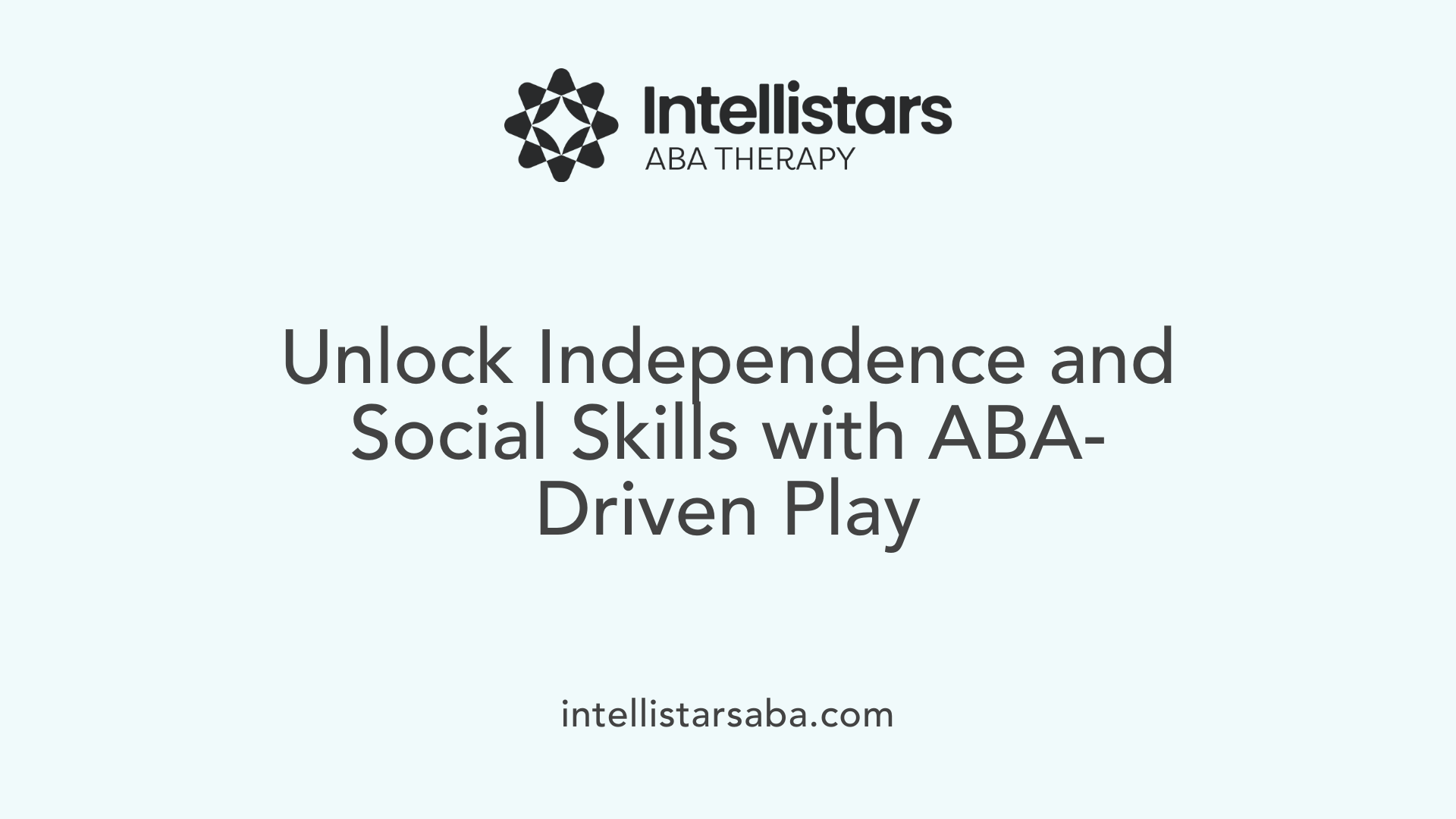Understanding ABA Therapy and Its Role in Autism Intervention
Applied Behavior Analysis (ABA) therapy stands as a leading, evidence-based approach designed to empower individuals with autism by enhancing their functional, social, and communication skills. This science-driven method employs reinforcement strategies, task analysis, and structured learning to encourage independence tailored to each child's unique profile. Specialized professionals and companies implement ABA therapy through individualized programs that promote positive behavior change, skill acquisition, and greater quality of life.
What is ABA Therapy and How Does it Support Children with Autism?

Definition of ABA
Applied Behavior Analysis (ABA) is a science-backed therapy designed to understand and modify behaviors in individuals with autism. It focuses on increasing positive behaviors like communication and social skills, while reducing challenging behaviors through the use of reinforcement techniques. ABA relies on highly individualized programs created and guided by trained professionals such as Board Certified Behavior Analysts (BCBAs).
Objective of ABA Therapy
The primary goal of ABA therapy is to help individuals become functionally and socially independent, thereby improving their overall quality of life. This includes teaching language, daily living, and social skills that aid children in navigating their environment effectively.
Techniques Used in ABA
ABA uses a wide array of techniques to promote learning and behavior change. These include:
- Positive reinforcement: Rewarding desired behavior with tokens or other stimuli to increase its frequency.
- Negative reinforcement: Removing unpleasant stimuli to encourage a behavior.
- Discrete Trial Training (DTT): Breaking skills into small, manageable steps with clear instructions and rewards.
- Modeling: Demonstrating behaviors during play to teach skills like asking politely or taking turns.
- Picture Exchange Communication System (PECS): Using pictures to aid communication.
- Reinforcement systems: Structured incentives tailored to the child's preferences.
- Prompts and cues: Visual and verbal aids ranging from subtle hints to direct assistance.
- Task analysis: Outlining the steps needed to complete complex tasks independently.
- Generalization: Teaching skills to apply across different settings and people.
Role of Professionals in ABA Therapy
ABA therapy is typically delivered by a team of specialists including psychologists, speech and language therapists, and occupational or physical therapists. These professionals work collaboratively to develop comprehensive treatment plans. Additionally, they train parents and caregivers in ABA principles, promoting consistency and support for the child at home. Early intervention, guided by these experts, is vital for optimal outcomes.
Through structured one-on-one sessions and evidence-based strategies, ABA therapy provides children with autism the tools they need to improve communication, social behaviors, and independence, fostering long-term growth and development.
How Specialized Providers Deliver Evidence-Based ABA Therapy

Customization of Therapy
Specialized providers tailor ABA therapy to meet each individual's unique needs. Therapists conduct thorough assessments to identify target skills and behaviors, creating personalized treatment plans. These plans integrate various methods such as positive reinforcement, discrete trial training, and task analysis to teach language, social, and daily living skills. By breaking down complex tasks into manageable steps and applying prompting strategies, therapists ensure tailored learning experiences that promote independence.
Settings for Therapy Delivery
ABA therapy is flexible and delivered across multiple environments. Common settings include the child’s home, schools, and community spaces to encourage skill generalization. Providers often embed teaching moments into natural routines and play activities, making therapy engaging and relevant. Play-based strategies that utilize modeling and natural reinforcement help sustain motivation and facilitate learning in familiar surroundings.
Interdisciplinary Team Involvement
Effective ABA therapy involves collaboration among a team of specialists such as psychologists, speech and language therapists, occupational therapists, and behavior analysts. This interdisciplinary approach addresses the diverse developmental needs of children with autism. Early intervention teams work closely with families, training parents and caregivers in ABA techniques to reinforce learning and maintain consistency between clinical sessions and home environments.
Ongoing Monitoring and Adjustment
Therapists continuously monitor progress through direct observation and data collection. This allows for dynamic adjustments to therapy goals and methods, ensuring they remain aligned with evolving needs. Regular feedback and communication with families support sustained gains. Therapy plans evolve as learners develop new skills, gradually reducing prompts to foster autonomy and social independence.
| Aspect | Description | Benefit |
|---|---|---|
| Customization | Individualized plans using behavior assessments and personalized techniques | Enhanced relevance and effectiveness |
| Flexible Settings | Therapy provided at home, school, & community for naturalistic learning | Better generalization of skills |
| Interdisciplinary Team | Collaboration among specialists and caregivers | Comprehensive support across domains |
| Continuous Monitoring | Data-driven adjustments to treatment | Optimized outcomes and skill mastery |
Integrating ABA Techniques to Encourage Independent Play

How Do Positive and Negative Reinforcement Support Independent Play?
ABA therapy employs positive reinforcement to encourage desired behaviors by adding a stimulus, such as giving tokens or rewards when a child successfully engages in independent play activities. Conversely, negative reinforcement involves removing an unpleasant stimulus to increase the likelihood of a behavior, such as taking away an unwanted interruption when a child initiates play on their own. Together, these reinforcement strategies motivate children to develop and maintain independent play skills.
What Role Do Prompting and Fading Have in Teaching Play?
To help children transition toward independent play, prompts and cues are used initially to guide behaviors. These prompts range from verbal or visual hints to physical assistance, applied from least to most invasive based on need. Gradually, therapists fade these prompts, reducing support over time to encourage autonomy. This systematic fading allows children to internalize play sequences and complete them independently.
How Does Task Analysis Facilitate Learning Play Skills?
Task analysis breaks down complex play activities into manageable steps, outlining the specific skills a child needs to succeed. For example, independent play involving building blocks can be divided into steps such as gathering blocks, stacking them, and cleaning up afterward. Teaching skills step-by-step helps children master individual tasks before combining them into more complex play routines, boosting confidence and ability.
Why Is Generalization Important for Play Behaviors?
Generalization ensures that play skills learned in therapy transfer to other settings, people, and environments. By practicing play behaviors with various therapists, caregivers, and in different contexts, children learn to engage independently beyond sessions. This adaptability is essential for meaningful and functional play in everyday life.
| ABA Technique | Description | Application to Independent Play |
|---|---|---|
| Positive Reinforcement | Adding rewards to increase desired behaviors | Rewarding successful initiation and continuation of play |
| Negative Reinforcement | Removing unpleasant stimuli to encourage behavior | Removing distractions when child initiates independent play |
| Prompting and Fading | Providing cues and gradually reducing them | Guiding play actions then fading prompts to foster independence |
| Task Analysis | Breaking tasks into steps | Teaching each play step like sharing or turn-taking |
| Generalization | Extending behaviors across settings and people | Practicing play with various people and in different environments |
Play-Based ABA Therapy: Making Learning Engaging and Naturalistic

What is Play-Based ABA Therapy and What Are Its Benefits?
Play-based ABA therapy integrates Applied Behavior Analysis techniques with play activities that children already enjoy. This approach makes learning fun and naturally motivating, helping reduce resistance often encountered in traditional therapy settings. By embedding teaching moments within play, it encourages naturalistic learning and skill generalization across different environments. The benefits include increased motivation, improved social skills, greater independence, and positive emotional associations with therapy. These outcomes collectively support children’s development in social, communication, and behavioral domains.
How Are Modeling and Natural Reinforcement Used During Play?
Core ABA techniques such as modeling behavior are used during play to teach social skills like asking politely and taking turns. Therapists demonstrate desired behaviors which children then imitate within play contexts. Natural reinforcement plays a crucial role, occurring when outcomes directly relate to a child’s actions—such as gaining access to a preferred toy when requesting appropriately. This method promotes autonomy and helps children apply skills in real-world situations.
What Types of Play Are Used in Therapy?
Several play strategies are incorporated, including:
- Structured Play: Activities like puzzles and imitation drills with clear goals to target specific skills.
- Functional or Pretend Play: Mimicking real-life situations to support understanding and social role development.
- Social Play: Interaction with peers focusing on turn-taking and cooperation.
- Free Play with Guidance: Child-led exploration that builds independence while subtly teaching skills.
Using a variety of play types helps address different learning objectives and keeps therapy engaging.
What Is the Role of Joint Attention and Turn-Taking Games?
Joint attention activities, such as blowing bubbles or catching, improve the child’s ability to focus on shared goals, which is vital for social and communication skill development. Turn-taking games, like passing a ball or sharing toys, cultivate patience, cooperation, and emotional regulation. These interactive play experiences nurture foundational social behaviors essential for effective interpersonal communication and relationships.
Benefits of ABA Therapy in Developing Independence Through Play

What are the benefits of Applied Behavior Analysis therapy for individuals with autism?
ABA therapy provides a wide range of benefits that significantly contribute to the development of independence in individuals with autism. Central to its effectiveness is the improvement of language, social, and self-help skills through structured techniques. These skills include communication, social interaction, daily living activities, and academic performance.
Skill development and emotional benefits
ABA therapy employs positive reinforcement, modeling, and task analysis to break down complex skills into manageable steps. Play-based ABA further enriches these interventions by embedding learning within enjoyable activities such as turn-taking games, pretend play, and joint attention exercises. This approach helps children develop patience, cooperation, and emotional regulation, while reducing behavioral challenges. Play naturally motivates children, fostering engagement and positive emotional associations with therapy sessions.
Parental involvement and home practice
Parents and caregivers play a crucial role in extending ABA therapy beyond clinical settings. Therapists train families in ABA principles, encouraging them to observe sessions and practice strategies at home. This consistency enhances skill generalization and helps maintain progress, making therapy a continuous part of the child’s daily routine.
Long-term improvements in communication and social skills
By targeting pivotal behaviors such as motivation and initiation of communication, approaches like Pivotal Response Treatment enhance not only specific skills but also broader social and academic abilities. Interactive play activities improve social skills such as turn-taking, sharing, and cooperating with peers. Over time, children become more functionally and socially independent, improving their overall quality of life.
Research supporting ABA efficacy
ABA therapy stands on a strong foundation of evidence-based research published in peer-reviewed literature. Early intensive intervention using ABA has been shown to produce meaningful gains in language, cognitive, and social domains for children with autism. Models like the Early Start Denver Model demonstrate that combining play-based ABA techniques with family involvement leads to significant reductions in autism symptoms and increased adaptive functioning.
| Benefit Area | Description | Examples and Methods |
|---|---|---|
| Skill Development | Enhances communication, social, and daily living skills | Positive reinforcement, task analysis, structured play |
| Emotional Benefits | Fosters motivation and reduces behavioral challenges | Play-based activities, natural reinforcement |
| Parental Involvement | Extends therapy into home environment | Training parents, home practice, consistency |
| Long-term Communication | Improves initiation and social interaction skills | Pivotal Response Treatment, turn-taking games |
| Scientific Validation | Supported by peer-reviewed studies and early intervention | Use of Early Start Denver Model, intensive ABA programs |
Empowering Autonomy: The Role of ABA in Promoting Independent Play
Applied Behavior Analysis (ABA) therapy serves as a cornerstone in supporting children with autism to develop independent play skills through a structured yet engaging approach. By combining reinforcement techniques, carefully planned prompts, and play-based strategies, ABA fosters critical social, communication, and self-help skills in a way that resonates naturally with children. Specialized professionals tailor these interventions to each child's needs, working closely with families to extend learning beyond therapy sessions. Ultimately, ABA not only cultivates independence and meaningful behavior change but also enriches children's motivation and joy in play, driving profound improvements in their overall quality of life.
References
- ABA therapy examples | Autism Resources
- Behavioral Therapy for Autism Spectrum Disorder in Children
- ABA Therapy Strategies: Benefits For Children With Autism
- Play-Based Strategies To Enhance ABA Therapy
- Applied Behavior Analysis (ABA)
- ABA Therapy Examples, Definition & Techniques
- Applied Behavior Analysis (ABA) for Children With Autism
- Treatment and Intervention for Autism Spectrum Disorder
- Applied Behavior Analysis (ABA)
- Applied Behavior Analysis (ABA)






